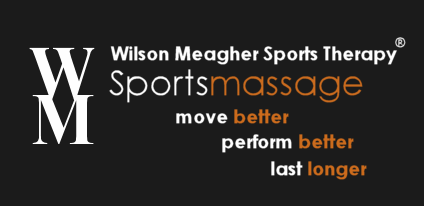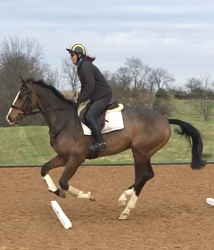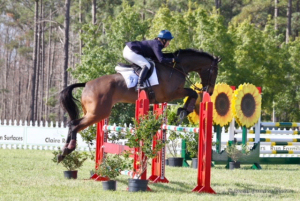|
TRAINER'S TIP - WINTER 2018 |
Trainer's Tip - by Liz MillikinQuestion: What standards do you use to determine when to compete your horses and when to move them up a level in competitions?
Response: 1. Address Physical Condition: ď These are very important questions. Basically my horses must be physically and mentally ready to do the job I ask of them. I work to create a solid foundation to begin with before competing. I purchase and compete off the track thoroughbreds and warmbloods. Most of the off the track thoroughbreds come with a lot of baggage and require more down time to re boot their brains and bodies. They re- generate pretty quickly, but since they were ridden in one way as a race horse, then when they are re-programmed to do flat work or jumping, they need time to let down. Most importantly they need time for their teeth, guts, joints, and muscles to stabilize and be treated if necessary in preparation for the next step in their lives. Thus I start by having my horses receive sportsmassage, chiropractic, I get their feet properly balanced and shod, teeth done, and anything else that they may require to support a solid physical foundation to successfully begin a new job. I think it takes about 30-90 days to accomplish this replenishment. They need to decompress, gain weight, let their GI systems normalize etc. They grow. They sleep and rest tremendously. The young warmbloodís donít seem to have the baggage, but their issues are usually around growth. They are slow developers. Physically they look so much more developed than the thoroughbred and because of this I am careful not to work and push them too soon so they donít develop physical problems down the road. 2.
As they become more confident, stronger, relaxed, and the exercises are easy, then I will add complex questions all at low heights. Most importantly, I make the questions simple because I am trying to build confidence through foot work and agility. When they are stronger and more rideable I increase the level of difficulty. I always take a walk break. This break allows me to analyze how the horse feels and how I am riding. I have the chance to assess how we are progressing. If I have a problem, I go back a step or two again to regain their confidence and then I progress forward. 3. Confidence Building and Competition: Once the horse is feeling confident, i.e. not tossing his head, rushing, or resisting, and does his work in a controlled and balanced manner with ease and confidence, he is ready to be challenged to the next level. I make sure to have a plan and a goal to determine how to prepare for competition. The goal may be toward where I want the horse to compete. When I bring the horse to a competition I assess his confidence as a reflection of whether I have educated him and done a good enough job. I want the horse to always be confident at whatever level he is competing at. It is a give and take relationship. One step forward and two steps back. If they donít feel confident I will drop them down a level or notch, work at home and adjust for what it is they need. Most importantly, each horse must be read as an individual. I do not treat all horses the same. The plan of developing the competition horse must be individually based and unique to that specific horse. When to compete and not to compete is a simple answer. The horse must be confident in the job I am asking him to do. Also the horse must be sound physically and mentally to compete. If any of these issues are in question, then I take a step back, and donít compete. It is always important to know the horseís strengths and weaknesses. For example: I do not compete one of my top big boned horses on hard surfaces because he hates it!! He truly is not comfortable on that type of surface. I need to adapt to them. It is truly about always building and maintaining their confidence. For example if I run my horse on a hard surface, he will do it, but he is not happy doing it and I am diminishing his confidence and risking his soundness. Always take a step back and assess. How is his tack fitting, are his muscles loose and strong, is he developing a top line. How is his weight, his feet, overall health? How is his coat? How is his attitude? Is he willing to keep progressing without resistance. There are so many facets to the overall health and well being of the horse when competing. I guess it comes down to good horsemanship and looking out for the best interest of the horse. 4.
I build confidence and try never to take it away. If the conditions at the competition are not conducive to what my individual horse needs I will not compete at that particular competition because the experience may take their confidence away. I am never afraid to do what is right for each horse regardless of outside pressures. Remember: there is always another day! |
 |


 Trainer:
Liz Millikin, of Millwood VA. USA, is an International 3 Day Event
rider, competitor and instructor is known for selling top quality horses
for all levels and disciplines from international to pleasure riding.
Liz has the unique ability to identify excellent conformation in the
horse and to train and prepare young horses to sell for sport. Her gift
in pairing horse and rider is evident in the success of those who have
purchased horses from her. Her horses have been sold to several
Olympians and have competed in both international and World Equestrian
Games competitions as well as in national and local competition and for
pleasure riding. Liz may be contacted at
Trainer:
Liz Millikin, of Millwood VA. USA, is an International 3 Day Event
rider, competitor and instructor is known for selling top quality horses
for all levels and disciplines from international to pleasure riding.
Liz has the unique ability to identify excellent conformation in the
horse and to train and prepare young horses to sell for sport. Her gift
in pairing horse and rider is evident in the success of those who have
purchased horses from her. Her horses have been sold to several
Olympians and have competed in both international and World Equestrian
Games competitions as well as in national and local competition and for
pleasure riding. Liz may be contacted at

